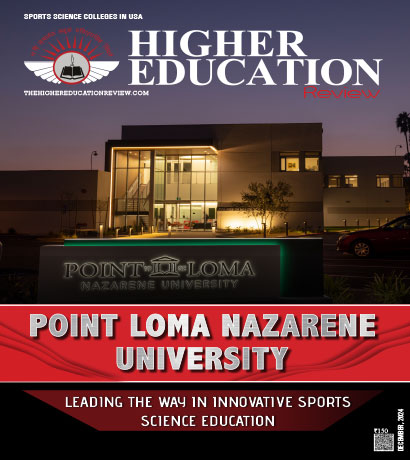Academic Trends in Times of COVID-19
 These are exceptional times worldwide. We need to go beyond the normal to manage this. Ordinary will not suffice. We all will have to invoke our extraordinary capacity to rise above the challenge.
These are exceptional times worldwide. We need to go beyond the normal to manage this. Ordinary will not suffice. We all will have to invoke our extraordinary capacity to rise above the challenge.
As we scratch our head to make sense of the crisis, its future and impact, people in the academia are facing COVID, a five inter-connected mega trends in India and around the world. This COVID stands for Collaboration, Optimization, Value Addition, Integration and Digitization.
Collaboration
Collaboration is the key to achieving anything. Many would know that the term TEAM is mentioned as ‘Together Everyone Achieves More’. As academics, not many of us go aggressive on collaboration. Collaboration can happen at three levels- Internal Collaboration, External Collaboration and Dynamic Collaboration (I.E.D). Internal Collaboration refers to pulling resources and expertise that exists on campus to provide the best available learning to students and train students to collaborate in projects, research studies, seminar presentations, and publications. Co-Teaching will be an important aspect of classroom/virtual learning as the demand is rising for inter-disciplinary learning.

External Collaboration refers to invite and engage with the expertise that exists in academia and the industry beyond the boundary of the campus. Terms like Visiting, Guest, Adjunct faculty have been there in our university lingua franca, but now we will hear more on Professors of Practice. Can our professors identify 10 people each in academia, industry and civil society who can review their Curriculum and Reading Material? This is how the external collaboration will strengthen our teaching-learning process.
Dynamic Collaboration refers to active engagement with the external world, not just by signing MoUs as is done to increase the number of collaborations but developing joint degrees, joint research, joint seminars, co-authored/edited books, faculty, and student exchanges, and capacity development including that of filing IPRs together. Dynamic collaboration can be suitably incentivized to get the most out of it.
The above three types of collaborations are necessary and without one the other won’t be as effective. The use and augment of digital platforms will certainly help achieve this easily and quickly.
Optimization
Optimization is the most effective use of a particular situation and available resources. This is like innovation. This is all about getting the most possible positive result in scarcity and constraints. When the economy has suffered severe loss around the world, we in academia cannot expect to get any huge financial support to augment our facilities for at least a year or two. What does it mean? Should we stop or should we compromise on our commitment to provide the best learning atmosphere to our future citizens? The answer is obviously no. We have to make optimal use of our resources through collaboration, value addition, integration and digitization.
Value Addition
Our faculty members toil hard for classroom preparation and delivery. Several hours of preparation and compilation of reading material forms an important part of teaching. But very few of our faculty members take this to the digital mode. Preparing a video, a podcast, a PPT, a book review discussion or simply recording the classroom delivery can in combine create a MOOC Course. This will be a huge value addition to the routine activity of teaching and learning on campus and beyond.
We have faced disasters, terrorist attacks, war like situations and economic slowdown in last two decades, never before any event or initiative has challenged the academia to go digital as the COVID 19 has done.
Most of our faculty members are not on LinkedIn or Twitter. Many don’t blog. Even if some of us are on Facebook, we rarely share issues and insights to trigger academic or policy discussions. Some find the social media difficult to operate and some others reject them as un-academic and hugely underestimate the power of these globally connecting social media platforms. For value addition, we can create several podcasts, videos, book reviews and co-authored articles from any given paper at the UG and PG levels.
Integration
The academia has a stake in knowledge dissemination and creation and it does not function in isolation. Many academics teach their papers in higher education with a narrow subject orientation thereby creating roadblocks to develop creative solutions for multi-dimensional socio-economic-political problems. This is true especially when the world is moving from narrow specializations towards holistic integration. Interdisciplinary learning is the new normal. Apart of integrating knowledge we have a responsibility to reflect on practice and engage with the wider society, government and citizens to deal and solve social problems. We all have heard the admonition to get down from the ivory tower and to wake up to smell the coffee.
The curriculum and the pedagogy must integrate knowledge with practice and customize to local needs. We need to train students to develop skills to apply for local and national solutions. This can be done by encouraging them to revisit their ancient roots and study their indigenous wisdom to develop a synthesis between the Eastern and the Western ideas and developments. We have been too western in our academia. Need to focus on de-Macaulaization as Lord Macaulay continues to hover around us always. So integration includes inter-disciplinarity, policy orientedness, embedding indigenous knowledge and questioning colonial indoctrinations.
Digitization
Social Distancing (SD) has led to Digital Closeness (DC). Never before any event or initiative has challenged the academia to go digital as the COVID 19 has done. We have faced disasters, terrorist attacks, war like situations and economic slowdown in last two decades. None of these have been truly global and mostly affected a country or a region. COVID has affected more than 210 countries and territories, the largest ever global pandemic in recent history.
Educational Institutions, Businesses, including all types of workplaces have been challenged to work from home and engage through online only. We in academia have been lagging behind the digitization. Whether it is automated attendance, payroll, ERP, digitization of all important documents, recording of lectures and maintaining active social media presence, in all these fronts now we have to work on war footing and create digital learning and administrative support systems in our campuses. There is no two ways about it.
COVID 19 is a serious challenge to our established ways of life especially in the academia. There is a need to respond and respond as soon as possible. Or else we will no more be relevant.

